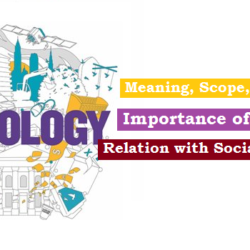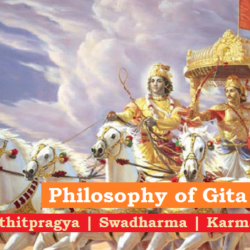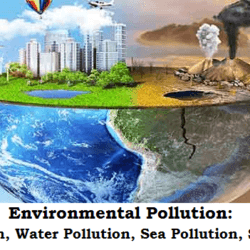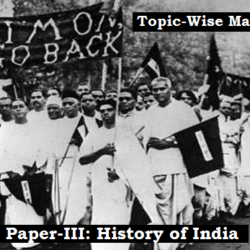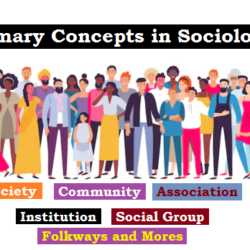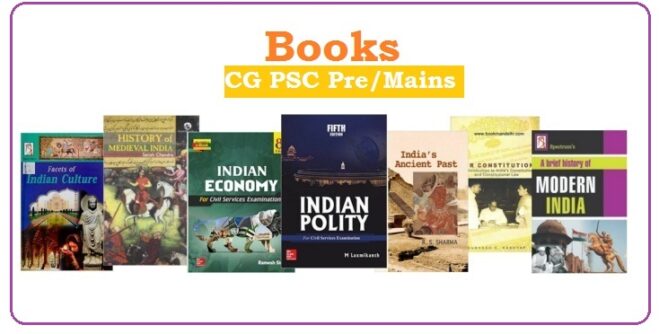
Paper I: General Studies, General Knowledge of Chhattisgarh
Part 1: General Studies
1. History of India and Indian National Movement.
2. Physical, Social & Economic Geography of India.
3. Constitution of India & Polity.
4. Indian Economy.
5. General Science & Technology
6. Indian Philosophy, Art, Literature & Culture.
7. Current Affairs & Sports.
8. Environment
Books: Read all the books suggested for covering the CG PSC Mains syllabus.
Part 2: General Knowledge of Chhattisgarh
1. History of Chhattisgarh, & Contribution of Chhattisgarh in Freedom Movement.
2. Geography, Climate, Physical status, Census, Archeological and Tourist Centres of Chhattisgarh.
3. Literature, Music, Dance, Art and Culture, Idioms and Proverbs,
Puzzle/riddle (Janula), Singing (Haanaa) of Chhattisgarh.
4. Tribes, Special Traditions, Teej and Festivals of Chhattisgarh.
5. Economy, Forest and Agriculture of Chhattisgarh.
6. Administrative Structure, Local Government and Panchayati Raj of Chhattisgarh.
7. Industry in Chhattisgarh, Energy, Water and Mineral Resource of Chhattisgarh.
8. Current Affairs of Chhattisgarh.
Books: Read all the books suggested for covering the CGPSC Mains syllabus.
Paper II: Aptitude Test
1. Interpersonal skills including communication skills;
2. Logical reasoning and Analytical ability
3. Decision making and problem solving
4. General mental ability
5. Basic numeracy (numbers and their relations, orders of magnitude etc.)
(Class X level), Data interpretation (charts, graphs, tables, data sufficiency
etc. -Class X level)
6. Knowledge of Hindi Language (Class X level).
7. Knowledge of Chhattisgarhi Language.
Knowledge of Hindi Language and Chhattisgarhi Language will be tested in Hindi and Chhattisgarhi Language only, without providing translation.
Note about the recent major changes in the syllabus of CG PSC Main Examination:
- Paper-I (Languages):
- Sanskrit Language is removed altogether.
- Hindi Language is expanded.
- Chhattisgarhi Language is expanded with grammar content.
- Paper- II (Essays):
- Instead of one national and one state specific essay, two essays from each part.
- International issues included with that of national.
- Paper- III (General Studies- I: History, Constitution and Public Administration):
- Pre-historic history included in national and state history.
- A vast topic from medieval period- Sultanate and Mughal Period included with history of South India.
- Many important topics like Election Commission, Special Provisions Related with Certain Classes dropped, which would be connected some other way. Therefore, do not miss the missing topics from Constitution part.
- Paper– IV (General Studies- II: Science, Aptitude and Environment):
- Mathematics as a separate paper removed.
- Science and Mathematics topics included in same paper
- Many important topics dropped each from Chemistry, Physics and Biology.
- Probability became tougher with inclusion of addition and multiplication theorem.
- Paper–V (General Studies- III: Economics and Geography):
- Geography of India included as a separate part.
- Geography of Chhattisgarh expanded with few topics.
- Paper- VI (General Studies- IV: Philosophy and Sociology):
- Indian Philosophy expanded heavily with Indian and Western Thinkers.
- Topics from Ethics also included in this paper.
- In Social Aspect of Chhattisgarh, there is no mention of Tourism Centres, however, it should be covered preferably.
- Paper –VII (General Studies- V: Laws, Programs and Organizations):
- A total new paper with legislations, Govt Programs and National and International Organizations.
Newly included topics are highlighted in bold and missing topics are also given for better understanding of the syllabus.
Part 01: General Hindi
- भाषा-बोध, संक्षिप्त लेखन, पर्यायवाची एवं विलोम शब्द, समोच्चरित शब्दो के अर्थ भेद, वाक्याशं के लिए एक सार्थक शब्द, संधि एवं संधि-विच्छेद, सामासिक पदरचना एवं समास-विग्रह, तत्सम एवं तद्भव शब्द, शब्द शुद्धि, वाक्य शुद्धि, उपसर्ग एवं प्रत्यय, मुहावरें एवं लोकोक्ति (अर्थ एवं प्रयोग),
- पत्र लेखन, हिन्दी साहित्य के इतिहास में काल विभाजन एवं नामकरण, छत्तीसगढ के साहित्यकार एवं उनकी रचनाएं।

- अपठित गद्यांश, शब्द युग्म, प्रारूप लेखन, विज्ञापन, प्रपत्र, परिपत्र, पृष्ठांकन, अधिसूचना, टिप्पणी लेखन, शासकीय, अर्धशासकीय पत्र, प्रतिवेदन, पत्रकारिता, अनुवाद (हिंदी से अंग्रेजी तथा अंग्रेजी से हिंदी)
Part 02: General English
- Comprehension, Précis Writing, Re arrangement and Correction of Sentences
- Synonyms, Antonyms, Filling the Blanks, Correction of Spellings, Vocabulary and usage
- Idioms and Phrases, Tenses, Prepositions, Active Voice and Passive voice, Parts of Speech
Book: High School English Grammar And Composition (English/Hindi) by Wren & Martin
Suggestion: Attempt exercises after completing the chapter.
Part 03: Chhattisgarhi Language
- छत्तीसगढ़ी भाषा का ज्ञान, छत्तीसगढ़ी भाषा का विकास एवं इतिहास, छत्तीसगढ़ी भाषा का साहित्य एवं प्रमुख साहित्यकार

- छत्तीसगढ़ी का व्याकरण: शब्द साधन- संज्ञा, सर्वनाम, विशेषण, क्रिया, वाच्य, अव्यय (क्रिया विशेषण, सम्बन्ध बोधक, विस्मयादि बोधक) कारक, काल, लिंग, वचन, शब्द रचना की विधियां, उपसर्ग, प्रत्यय संधि, (अ) हिंदी में संधि (ब) संस्कृत में संधि, समास
- छत्तीसगढ़ राजभाषा आयोग, छत्तीसगढ़ी भाषा के विकास में समाचार पत्रों, पत्रिकाओं, आकाशवाणी, व सिनेमा की भूमिका, लोकव्यवहार में छत्तीसगढ़ी, छत्तीसगढ़ी भाषा का सामान्य परिचय- नामकरण, छत्तीगढ़ी में क्रियाओं में वर्तमान, भूत तथा पूर्ण+ अपूर्ण वर्तमान, भविष्य काल के रूप, काल, लिखना- क्रिया के भूत काल के रूप, पूर्ण+ अपूर्ण भूतकाल, पढ़ना- क्रिया के भविष्यकाल के रूप, पूर्ण+ अपूर्ण भविष्यकाल, पाद टिप्पणी
Paper- II (Essays)

Candidates will have to write two essays from each part on issues (Reason, present status including data and solution) from this part. Four problems will be given in each part; Candidate will have to write two essays on each part about 750 words. Each issue will carry 50 marks.
Part 01: International and National level issues
Part 02: Chhattisgarh State level issues
Paper- III (General Studies- I: History, Constitution and Public Administration)
Part 01: History of India
Ancient History:
- Pre-historic age, Indus civilization, Vedic civilization
- Jainism and Buddhism
- Rise of Magadh Empire, Mauryan polity and economy, Sunga, Satavahana period, Gupta Empire, Development of art, architecture, literature and science during the Gupta-Vakataka period.

- Major dynasties of South India
Book: Old NCERT XI History Ancient Civilization by R S Sharma
Suggestions: In the above book follow only topics listed in the syllabus
Medieval History:

- Sultanate and Mughal period, Vijayanagar Kingdom, Rise of Marathas
- Bhakti Movement, Sufism, Development of literature in regional languages
Books: Old NCERT XI History Medieval India Satish Chandra (XI) and NCERT XII History Themes in Indian History (Part-II)
Suggestions: In the above books follow only topics listed in the syllabus
Modern India:
- Advent of Europeans and factors responsible for the establishment of British supremacy
- Expansion of British Empire: Wars and diplomacy
- Rural Economy: Agriculture, decline of handicrafts industries
- Land revenue systems: Permanent Settlement, Ryotwari, Mahalwari,
- Relation of East India Company with States
- The Revolt of I857:
- Changes in administrative structure, urban economy after 1858,
- Development of Railways, Industrialization, Constitutional Development
- Socio- Religious Reform Movements: Brahmo Samaj, Arya Samaj,Prathna Samaj, Ram Krishna Mission
- Rise of Nationalism, establishment of Indian National Congress,
- Partition of Bengal and Swadeshi Movement
- Rise and Development of Communalism, Revolutionary Movements, Home Rule Movement

- Gandhian Movements, Quit India Movement
- Workers, peasant and tribal movements,
- Reform movement among Dalits,
- Reform movement among Muslims, Aligarh Movement
- Indian National Army, independence and partition of India, merger of States
Book: Old NCERT XI History Modern India by Bipin Chandra
Suggestions: In the above book follow only topics listed in the syllabus
Part 02: Constitution and Public Administration
Constitution of India:
- Constitutional development of India (1773-1950),
- Formation of the Constitution and salient features, preamble, concept of basic structure, nature of the Constitution.
- Fundamental Rights and Duties. Directive Principles of State Policy.
- Union Executive, Legislative and Judiciary, Attorney General.
- State Executive, Legislature and Judiciary, Advocate General.
- Emergency Provisions, Constitutional amendments.
- Panchayats and Municipalities.
- Right to Constitutional Remedies, Public Interest Litigation, Judicial Activism, Judicial Review
- Centre-State Relationship: Legislative, executive and financial.
- All India services, union and state public service commission.
Missing Topics:
- Tribunals and Administrative Tribunals, Election and Election Commission
- Special provisions relating to Scheduled Castes, Scheduled Tribes and Backward Classes
- Official Language- Language of the Union and Regional Languages
- Schedules
Book: Indian Polity by M Laxmikanth
Suggestions: In the above book follow only topics listed in the syllabus. This book is more than enough to cover every topic of the syllabus.
Govt. of Chhattisgarh:
- Legislative, Executive and Judiciary.
- Administrative Structure of Chhattisgarh.
Book: Indian Polity by M Laxmikanth
Suggestions: In the above book follow only topics listed in the syllabus. This book is more than enough to cover every topic of the syllabus.
Public Administration:
- Public Administration: meaning, scope, nature and importance
- Public administration and private administration under liberalizations
- New Public Administration, Development administration and comparative administration.
- New dimensions in public administration, State vs. Market, rule of law
- Organization: principles, approaches and structure.
- Management: Leadership, policy determination, decision making.
- Instruments of Administrative Management: Co-ordination, delegation, communication, observation (or supervision) and motivation.
- Administrative Reforms, Good governance, E-governance, bureaucracy, district administration.
- Control on Administration in India: Parliamentary, financial, judicial and executive. Lokpal and Lok Ayukta. Right to information.
- Government types: Parliamentary- Presidential, unitary-federal Government. Theory of separation of powers.
Missing Topics:
- Theory of Natural Justice.
- Concept of State, Sovereignty, Democracy- Direct and Indirect.
Book: Public Administration by M Laxmikanth and IGNOU BA Public Administration.
Suggestions: In the above books follow only topics listed in the syllabus.
Part 03: History of Chhattisgarh

- Pre-historic Age
- History of Chhattisgarh from Vedic age to Gupta Period
- Major dynasties like Rajarshitulya Kula, Nala, Sharabhpuriyas, Pandu, Somvanshis etc.
- The Kalchuris and their Administration
- Chhattisgarh under the Marathas
- Chhattisgarh under British protectorate, Former states and Zamindaris of Chhattisgarh, Feudatory States, Revolt of 1857,
- Freedom Movement in Chhattisgarh
- Workers, peasant and tribal movements,
- Formation of Chhattisgarh State.
Paper– IV (General Studies- II: Science, Aptitude and Environment)
Part 01: General Science
Chemistry:
- Rate of chemical reaction and chemical equilibrium: Preliminary knowledge of rate of chemical reaction. Fast and slow chemical reactions.
- Metals: Position of metals in the periodic table and general properties. Metal, mineral ore. Difference between mineral and ore.
- Metallurgy: concentration, roasting, smelting, refining of ores. Metallurgy of copper and Iron. Corrosion of metals. Alloys.
- Nonmetals: Position of nonmetals in the periodic table and general Properties.
- Some important organic compounds, some general artificial polymers, polythene, polyvinyl chloride, Teflon, soap and detergents.
Missing Topics:
- Reversible and irreversible chemical reactions. Reversible reaction and dynamic nature of equilibrium. Acids and bases. pH scale (simple numerical questions). Exothermic and endothermic reactions.
- Some important chemical compounds – properties and uses. Method of production manufactures (water, washing soda, baking soda bleaching powder and plaster of Paris) preparation of building material-lime cement glass and steel.
- Preparation properties and uses of Hydrogen oxygen and nitrogen.
- laboratory method of preparing alcohol and acetic acid, properties and uses of artificial polymers, polythene, polyvinyl chloride, Teflon, soap and detergents.
Book: NCERT Chemistry (IX-XII)
Suggestions: In the above books follow only topics listed in the syllabus.
Physics:
- Light: nature of light reflection of light, laws of reflection, reflection from plane and curved surface, image formation by plane convex and concave mirror, relation between focal length and radius of curvature
- Causes of origin of energy in the Sun
- Electric discharge in gases
- Electricity and its effects: electric intensity, potential, potential difference, electric current Ohm’s law. Resistance specific resistance, influencing factors, combination of resistance and related numerical examples thermal effect of current its use, calculation of power and electrical energy spent (numerical), precautions observed in electric experiments.

- Photo electric effect, Solar Cell, Structure, PN Junction Diode
Missing Topics:
- Source of Energy – Conventional and new sources of energy, source of solar energy, solar heating devices, solar cooker solar cell, wind energy, biogas, fossil fuels, ideal fuel properties of ideal fuel. Nuclear energy, nuclear Fission, Fusion, chain reaction, nuclear reactor, uses and harms of nuclear energy. General information about CREDA.
- Determination of focal length of concave mirror by single pin method. (Relation between u-v-f, numerical examples)
- Refraction of light- laws of refraction, refraction by glass slab, critical angle, total internal reflection, use of total internal reflection in daily life. Lens (converging and diverging lens). Definition focal length optical centre image formation by lens.
- Human eye, its defects and remedies. Comparison between photographic camera and human eye, Simple telescope and astronomical telescope. Construction working, uses, ray diagram (no formula derivation).
- Chemical effects of electric current, Primary and secondary cells their properties and drawback. Leclanche cell, dry cell, lead accumulator cell, construction.
- Magnetic effect of current – Magnetic effect of current, Oersted experiment, electro-magnetic induction, electric motor, working principle and use of generator, general studies of alternating current and direct current, discharge tube, cathode rays, X-rays and their properties
- Magnetism – Magnet and it’s types artificial magnet, methods of preparing magnets, molecular theory of magnetism, demagnetization, magnetic keepers, magnetic lines of force and their properties. Plotting the lines of force Terrestrial magnetism, magnetic storm. Magnetic meridian geographical meridian, relation between VHI and θ
Book: NCERT Physics (IX-XII)
Suggestions: In the above books follow only topics listed in the syllabus.
Biology:
- Transport: Transport of mineral and water in plants and animals (in context of human being). structure and function of blood,
- Structure and working of heart (preliminary knowledge
- Photosynthesis: Definition, main steps of the process.
- Light reaction and dark reaction.
- Respiration: Definition, breathing and respiration, Types of respiration, Aerobic and anaerobic respiration, respiratory organs of animals,
- Respiratory system of human being and mechanism of respiration (general information)
- Animal nutrition: Human digestive system and digestive process (general information)
- Control and coordination: Nervous system of human being. Structure and function of human Brain and spinal cord
- Coordination in plants and animals: phyto-hormones, endocrine glands hormone and their function.
- Reproduction and growth: type of reproduction
- Asexual reproduction: fission, budding, regeneration,vegetative reproduction, layering, cutting, grafting, Porthenogenesis,
- Sexual reproduction in plants, structure of flower and reproduction process (general information), pollination fertilization.
- Human reproductive system and reproduction process (general information)
- Heredity and evolution: heredity and variation. Fundamental basis of heredity chromosome and DNA (preliminary information)
Missing Topics:
- Structure and function of blood vessels, coagulation of blood, blood group, blood transfusion, blood bank,function of lymph system. Diseases related to heart.
- Factors Influencing Photosynthesis. Experiments related to photo synthesis.
- Respiration: respiratory quotient (RQ) of carbohydrate, fat and protein.
- Animal nutrition: Types of nutrition, Autotrophic Nutrition, heterotrophic Nutrition, Holozoic, Parasitic, and Saprophytic, ‘symbiotic, Insectivorous. Important terms of nutrition process. Digestion in unicellular cell animal (amoeba) and multi cellular animal grass hopper.
- Excretion – excretion in plants and excretory product. Excretion in animal and excretory organs. Excretion system of man and excretion process (general information) artificial kidney dialysis, Osmoregulation, Diseases related to kidney.
- Control and coordination: reflex action
- Heredity and evolution:gene. Sex determination preliminary knowledgeof organic evolution (Oparin’s theory only).
Book: NCERT Biology (IX-XII)
Suggestions: In the above books follow only topics listed in the syllabus.
Part 02: Aptitude Test, Logical Reasoning, Mental Ability
Basic Mathematics:
- Addition, subtraction, multiplication and division of rational numbers. Finding the rational number between two rational number
- Ratio and Proportion: definition, properties, alternendo, invertendo, componendo, etc. and their uses.
- Factorization, LCM and HCM.
Vedic Mathematics:
- Vedic Mathematics, additional, subtraction, multiplication, division and checking the answer through bijank, square, square roots, cube roots, vinculam and its application, the application of vedic mathematics methods in algebra, etc.
- Introduction and creativity of Indian Mathematicians in reference with: Aryabhata, Varahamihira, Brahmagupta, Bhaskaracharya, Shrinivas Ramanujan).
Data Analysis:
- Mathematical operation Basic numeracy (numbers and their relations, orders of magnitude etc.), Data interpretation (charts, graphs, tables, data sufficiency etc.) and analysis of data.
Applied Mathematics:
- Commercial Mathematics: Banking, calculation of interest on/in savings account, fixed deposit account and recurring deposit account.
- Calculation of income tax (for salaried person and excluding house rent allowance).
- Profit and Loss, Percentage, Interest and averages. Time, speed, distance, river and boat.
- Arithmetic mean, median, mode

- Probability, Question related to addition and multiplication theorem on probability.
Logical Reasoning:
- Analog Test, Odd word, Odd pair of words, Coding & Decoding Test, Relation Test, Alphabet Test, Mathematical Operations, Logical analysis of words, Inserting the missing number or word,
- Assertion and Reason, Situation reaction test, Figure series, Deletion of elements, General Mental ability.
Missing Topics:
- Ratio and Proportion: Simultaneous equation, (a + b) (a + b), (a – b) (a – b), (a + b) (a – b) related questions.
- Arithmetic progression – Definition, general (nth) term and sum of n terms, arithmetic mean.
- Averages: geometric and harmonic mean, pie-chart.
- Distance between two points, proportional division of a line (section formula), area of triangle, condition of co-linearity of three points.
- Trigonometry – Measure of angles in the sexadesimal. contesimal and circular systems, relation between arc, radius and central angle. Proof of the trigonometrical ratios of complementary angles – sin(90- θ) = cos θ, cos(90- θ) = sin θ, tan(90- θ) = cot θ, cot(90- θ) = tan θ, sec(90- θ) = cosec θ, cosec(90- θ) = sec θ and related questions.
- Mensuration – Surface area and volume of prism, cylinder, cone and sphere. Similar triangles, circles and geometrical constructions
- Change in binary number to decimal number and decimal number to binary number.
- Algorithm method – meaning and quality, indefinite, definite, input and output, effectiveness.
Part 03: Applied & Behavioural Science
Technology:
- Role of Information Technology in Rural India, basic knowledge of computers, computers in communication and broadcasting, software development for economic growth. Broad applications of IT.
- Energy Resources: Energy demands, renewable and nonrenewable energy resources
- Nuclear energy, the development and its utilization in the country.
- Current Science & Technology developments in India, origin of agriculture, Progress of Agricultural Science and its impacts, Crop science in India, Fertilizers, Control of pests and disease scenario in India.
Missing Topics:
- National policy of science and technology and changes in the policy from time to time, purpose of technology.
- Space programme in India and its applications with special reference to industrial, agricultural and other rural developmental activities, INSAT and IRS systems.
Environment:
- Bio-diversity and its conservation: General introduction, definition, species and genetic diversity, Bio-geographic classification of India,
- Importance of Bio-Diversity: Constructive and destructive application, Importance of social, moral and alternative vision; Global, national and local level bio-diversity,
- India as a wide diversity nation, Hotspots of biodiversity,
- Threats to biodiversity: Residential damage, damage to wildlife, humans and wild animals struggle,
- India’s threatened (endangered) and local species,
- Conservation of bio-diversity: Topological and non-topological conservation.
- Environmental pollution: Cause, effect and control measures
- Air pollution, water pollution, sea pollution, soil pollution, sound/noise pollution, thermal pollution, nuclear pollution.
- Solid waste management: Urban and Industrial solid waste management: reason, effect and control,
- Human role in pollution control
Missing Topics:
- Disaster Management, Floods, Earthquake, Cyclones and Landslide.
- Human Population and Environment, Population growth, Variation in the population in various countries. Population explosion and Family Welfare Programme. Environment and Human health.
Books: Environmental Courses for Undergraduate Courses by UGC and Know Your Environmental by IGNOU
Suggestions: In the above books follow only topics listed in the syllabus.
Paper–V (General Studies- III: Economics and Geography)
Part 01: Economics of India & Chhattisgarh
Indian Economics:
- National and per capita income,
- Structural changes in the Indian Economy (GDP and work force), Changes in the role of Public and Private Sectors and their shares in the total plan outlay of the latest plan, Economic Reforms,
- Problems of poverty and unemployment, magnitude and measures initiative to ameliorate them.
- Monetary Policy– structure of Indian Banking and non-banking financial institutions and reforms in them since 1990s.
- Regulation of Credit by RBI
- Pattern of Revenue, Expenditure, Public Debt, fiscal deficit and effects on the Economy.
Book: NCERT XI Indian Economic Development and NCERT XII Introductory Macroeconomics
Suggestions: In the above books follow only topics listed in the syllabus.
Economics of Chhattisgarh:
- Demographic features and social backwardness of the Scheduled Castes, Scheduled Tribes, Backward classes and Minorities. Literacy and occupation structure, changes in the sectoral distribution of income and employment.
- Socio- Political and Economic empowerment of Women. Child Labour problem. Rural Development
- State Finance and Budgetary policy: Tax structure, Sharing Central Taxes, Expenditure pattern in Revenue and Capital Account as well as plan and non-plan expenditure.
- Public Debt composition: Internal and External Debt including World Bank loans
- Sources of Rural Credit in Chhattisgarh: Institutional and non-institutional
- Structure and growth of Co-operatives and their shares in total credit adequacy and problems.
Part 02: Geography of India
Physical Geography:

- Physical features of India, location & extension, Geological Structure, Physical Divisions,
- Drainage System, Climate, Soil,
- Vegetation and importance of forest, Indian forest policy, Forest conservation
Book: NCERT XI Fundamentals of Physical Geography
Suggestions: In the above books follow only topics listed in the syllabus
Human Geography:

- Human Characteristics: Population, Census, Population Growth, Density and Distribution.
- Birth rate, Mortality rate, Infant Mortality rate, Migration, Literacy
- Occupational Structure, Urbanization
- Agriculture: Characteristics of Indian agriculture,
- Agricultural food Crops, Cereal, pulses, Oil seeds and other crops, Production and distribution, mean of irrigation and its importance,
- Modernization of agriculture, problems of agriculture and planning, Irrigation multipurpose projects,
- Green revolution, white revolution, Blue revolution
- Mineral resources: Mineral storage, production and distribution of mineral
- Energy resources: Coal, petroleum, thermal power energy, nuclear energy, non conventional sources of energy
- Industries: Development and structure of industries in India, large Scale medium, small and smallest scale,
- Agriculture, forest and mineral based industries.
Book: NCERT XI Fundamentals of Human Geography
Suggestions: In the above books follow only topics listed in the syllabus
Part 03: Geography of Chhattisgarh

- Physical features, location & extent,
- Physical Divisions and Drainage System,
- Climate, soil,
- Vegetation and wild life: importance of forest, wild life management system, national parks and sanctuaries, State Forest Policy, Forest conservation
- Human Characteristics: Population, population growth, Density and Distribution. Birth rate, Mortality rate, Infant Mortality rate,

- Migration, Sex ratio, age group, schedule caste population literacy, occupational structure, urbanization, family welfare programs
- Agriculture: Agricultural food crops, cereal, pulses, oil seeds and other crops, production and distribution, means of irrigation and its importance, important irrigation projects, problem of agriculture and state scheme for farmers benefits
- Mineral resources: Various types, mineral storage in Chhattisgarh, production and distribution of mineral
- Energy resources: Coal, thermal power energy, non conventional sources of energy
- Industries: Development and structure of industries in Chhattisgarh, large Scale medium, small and smallest scale.
- Agricultural, forest and mineral based industries,
- Means of transport and tourism.
Missing Topics:
- Structure of Agriculture output, Administered prices including minimum support and procurement prices. Public Distribution System in Chhattisgarh.
- Growth and structure of industries in Chhattisgarh: their comparison, growth, weaknesses and problems
Paper- VI (General Studies- IV: Philosophy and Sociology)
Part 01: Philosophy
Indian Philosophy:

- Nature of Philosophy, its relation between religion and culture, difference between Indian and western Philosophy
- Veda and Upanishad: Brahman, Atman,Rit, Philosophy of Gita- Sthitpragya, Swadharma, Karmayoga
- Philosophy of Charvaka: Epistemology, Metaphysics, Hedonism.
- Philosophy of Jain: Nature of Jiva, Anekantvada, Syadavada, Panchamahavrata,
- Philosophy of Buddha: Pratityasamutpada, Ashtanga Marg, Anatmavada, Kshanikvada
- Six schools of Indian philosophy:
- Philosophy of Samkhya: Satkaryavada, nature of prakriti and purusha, vikasavada
- Philosophy of Yoga: Ashtanga Yoga
- Philosophy of Nyaya: Prama, Aprama, Asatkaryavada
- Philosophy of Vaisheshika: Parmanuvada,
- Philosophy of Mimamsa: Dharma, Theory of Apurva,
- Philosophy of Advaita Vedanta: Brahman, Maya, Jagat, Moksha
Indian Philosophers:

- Kautilya: Theory of Saptanga, theory of Mandal;
- Swami Vivekananda: Practical Vedanta, universal religion,
- Sri Aurbindo: Integral yoga, super mind
- Gurunanak: social-ethical philosophy,
- Guru Ghasidas: Characteristics of Satnam pantha;
- Vallabhacharya: Pushtimarga
- Mahatma Gandhi: Ahinsa, satyagraha, eleven vows;
- Bhimrao Ambedkar: Social thought,
- Deendayal Upadhyay: Ekatma manav darshan
Western Philosophers:

- Plato: virtues;
- Aristotle: theory of causation;
- Saint Anselm: ontological argument for the existence of God;
- Descartes: method of doubt, I think therefore I am;
- Spinoza: Substance, Pantheism;
- Leibnitz: theory of Monad, theory of pre- established harmony;
- Locke: epistemology;
- Berkeley: esse est percipii;
- Hume: skepticism;
- Kant- criticism;
- Hegel: phenomenology and spirit, dialectical idealism;
- Bradley: idealism.
- Moore: realism;
- A.J. Ayar: verification theory;
- John Dewey: pragmatism;
- Saftre: existentialism
Ethics:

- Meaning of Religion, Nature of philosophy of religion, religious tolerance, secularism, problem of evil
- Ethical values and ethical dilemma,
- Ethical elements in administration: honesty, responsibility, transparency, code of conduct for public servants
- Corruption: Meaning, types, cause and effect, efforts to remove corruption.
- Relevance of whistle-blower.
Missing Topics:
- Unity and universality of religions, religious tolerance and secularism,
Part 02: Sociology
- Sociology: Meaning, scope and nature; importance of its study; relation with other social sciences.
- Primary Concepts: Society, community, association, institution, social group, folkways and mores.
- Individual and Society: Social interactions, status and role, culture and personality, socialization.
- Hindu Social Organization: Religion, Ashram, Varna, Purusharth.
- Indian social problems,
- Social Stratification: Caste and Class.
- Social Processes: Social interaction, co-operation, struggle, competition.
- Social Control and Social Change: Sources and agencies of social control, processes and factors of social change.
- Social disorganization: Anomie and alienation, inequality.
- Social Research and Techniques: Objective of social research, use of scientific method to study of social phenomena, problems of objectivity.
- Tools and techniques of data collection: Observation, interview, questionnaire, schedule.
Part 03: Social Aspect of Chhattisgarh
Tribes of Chhattisgarh:
- Tribal social organization: Marriage, Family, Clan, youth dormitories.
- Tribal Development: History, programmes and policies, The constitutional system
- Tribes of Chhattisgarh:
- Special primitive tribes of Chhattisgarh, other tribes, schedule caste and other backward class of Chhattisgarh.
- Main ornaments popular in tribes of Chhattisgarh,
- Special traditions.
- Tribal Problems: Isolation Migration and acculturation.
Art of Chhattisgarh
- Folk arts of Chhattisgarh, folk literature, folk songs, folk legend, folk theater,
- Prominent folk artists of Chhattisgarh
- Idioms and Proverbs, Puzzle/ riddle (जनऊला), Singing (हाना)
- Literary, music and art institutions of Chhattisgarh,
- Chhattisgarh State awards and Regards in these fields.
Culture of Chhattisgarh
- Folk culture, chief fairs and festivals of Chhattisgarh.
- Protected archaeological monuments, sites and excavated sites in State.
- Tourism places marked by Chhattisgarh Govt
- National Park, Sanctuaries
- Waterfalls and caves of Bastar,
- Major saints of Chhattisgarh.
Missing Topics:
- Major Archaeological Center- Bhoramdev, Mallhar, Deepadih, Maheshpur, Sirpur, Rajim, Matku Dwip, Sivrinarayan, Taala, Pachrahi, Barshur
- Tourism Centre – Chitrakot, Amritdhara, Mainpart, Dongarhgarh, Girodhpuri, Damakheda, Ramjharna, Turri Dham, Damohdehra, Dantewada, Ratanpur, Madwarani, Chandrapur, Ghatarani, etc.,
Paper –VII (General Studies- V: Laws, Programs and Organizations)
Part 01: Welfare, Development Programme & Laws
Social and Important Legislation:

- Indian Society, social legislation as a form of a mean of social transform.
- Human Rights Protection Legislation 1993,
- Protection granted to females under CrPC, Indian Constitution and Criminal Law (Penal Code).
- Protection Act 2005 to Females from Domestic violence
- Civil Rights Protection Act 1955,
- Scheduled castes and scheduled tribes Atrocity Protection Law 1989
- Right to Information Act 2005, Environment Protection Act 1986, Consumer Protection Act 1986, Information Technology Act 2000, Corruption Prevention Act 1988.
Legislation of Chhattisgarh:

- Customary various laws and Acts in Chhattisgarh and their welfare and developmental impact on residents of Chhattisgarh
Welfare Schemes of Chhattisgarh Government:

- Customary welfare, people-oriented and important schemes introduced in various times by Chhattisgarh Government
Part 02: International & National Sports, Events & Organisation

- United Nations and its Associated Organizations.
- International Monetary Fund, World Bank
- Asian Bank, SAARC, BRICS, Other Bilateral and Regional Groups,
- World Trade Organization and its impact on India.
- National and international sports and its competitions
Part 03: International & National Educational Institute & their Role of Human Development

- Availability of skilled human resources, employability and productivity of human resources, various trends of employment.
- Education in human resource development, a mean universal/equal elementary Education, higher education and technical Education, quality of vocational education
- Role of Various institutions and councils in human resource development:
- Higher Education and National Commission for Research, National Educational Research and Training council (NCERT), National Educational Schemes and Administration University, University Grants Commission (UGC)
- Open University, All India Technical Education Council (AICTE), National Education Teacher Council, National Vocational Education Council, Indian Agriculture Research Council
- Indian Institute of Technology (IIT), Indian Institute of Management (IIM), National Institute of Technology (NIT), National Law University (NLU)
- Poly technique and ITI
- Issues related to girls’ education, deprived class and disabled people.

 Home
Home Syllabus
Syllabus Contact Us
Contact Us
